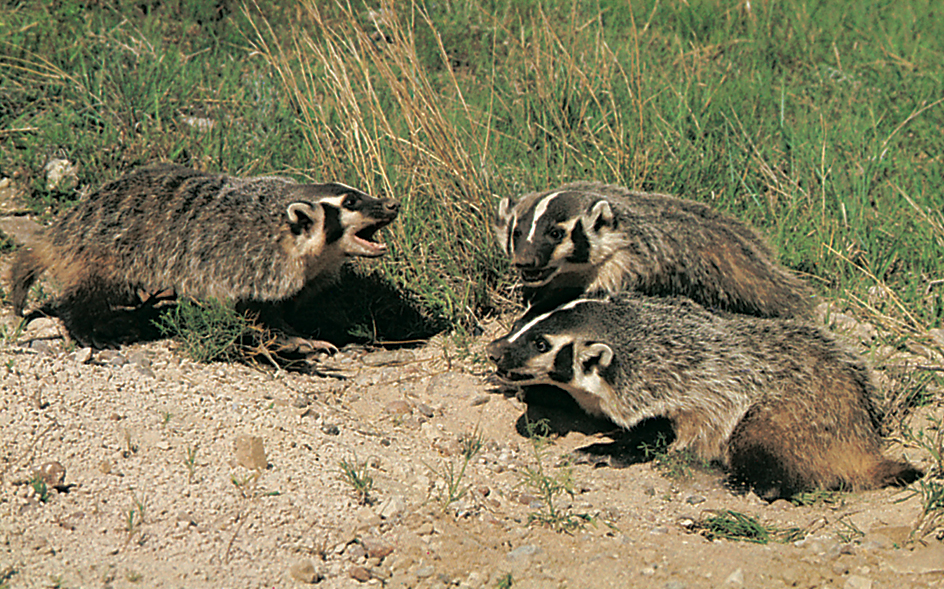Badger is any of several digging mammals that usually have black-and-white markings on the head. The American badger lives in North America from southwestern Canada to central Mexico. The European badger lives throughout Europe and northern Asia. The honey badger, or ratel, is not a true badger, though it looks and behaves like one. Honey badgers are found from Africa to India. See Honey badger.

A badger has a short, broad body; black feet with long claws; and a short, bushy tail. The American badger measures 20 to 35 inches (51 to 89 centimeters) long, including the tail. It weighs from 8 to 25 pounds (4 to 11 kilograms). It has a grayish to reddish upper body and a dull yellow underside. A white stripe runs from the nose to the shoulders. The European badger measures from 27 to 43 inches (68 to 110 centimeters) long and weighs 22 to 44 pounds (10 to 20 kilograms). It has a grayish upper body and black limbs and underparts.
Badgers are expert diggers, especially for their size. They dig complicated burrows in which they live. They also dig to catch prey and to escape danger. Badgers can dig fast.
These animals usually try to avoid predators (hunting animals) by retreating or by tunneling underground. If they cannot escape a predator, badgers become savage fighters. They use their claws and teeth as weapons and are protected by their thick fur and tough skin.
Badgers live in a variety of habitats, from grasslands to mountains. They usually are most active during the night and feed chiefly on ground squirrels and prairie dogs. They also eat birds, lizards, rabbits, burrowing rodents, and invertebrates (animals without backbones), such as insects.

American badger
American badgers often live alone, while European badgers live in groups of up to 12 individuals. Females give birth to one to five young each year. Young badgers may stay with their mother for several months.
During the winter, badgers may spend the coldest weather sleeping in their burrows. Scientists do not regard the badger’s winter sleep as true hibernation. During the winter, the body temperature, breathing rate, and heart rate of badgers do not drop as much as they do in true hibernators. Also, badgers can be easily awakened and often are active on warm winter days.
Badger fur was once used to line coats and to make brushes. However, synthetic materials have largely replaced badger fur in making these products.
